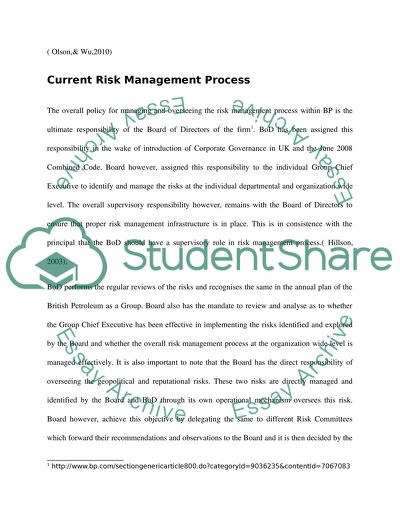Cite this document
(“Risk management in British Petroleum (BP) Essay”, n.d.)
Retrieved from https://studentshare.org/environmental-studies/1421225-risk-management-in-british-petroleum-bp
Retrieved from https://studentshare.org/environmental-studies/1421225-risk-management-in-british-petroleum-bp
(Risk Management in British Petroleum (BP) Essay)
https://studentshare.org/environmental-studies/1421225-risk-management-in-british-petroleum-bp.
https://studentshare.org/environmental-studies/1421225-risk-management-in-british-petroleum-bp.
“Risk Management in British Petroleum (BP) Essay”, n.d. https://studentshare.org/environmental-studies/1421225-risk-management-in-british-petroleum-bp.


